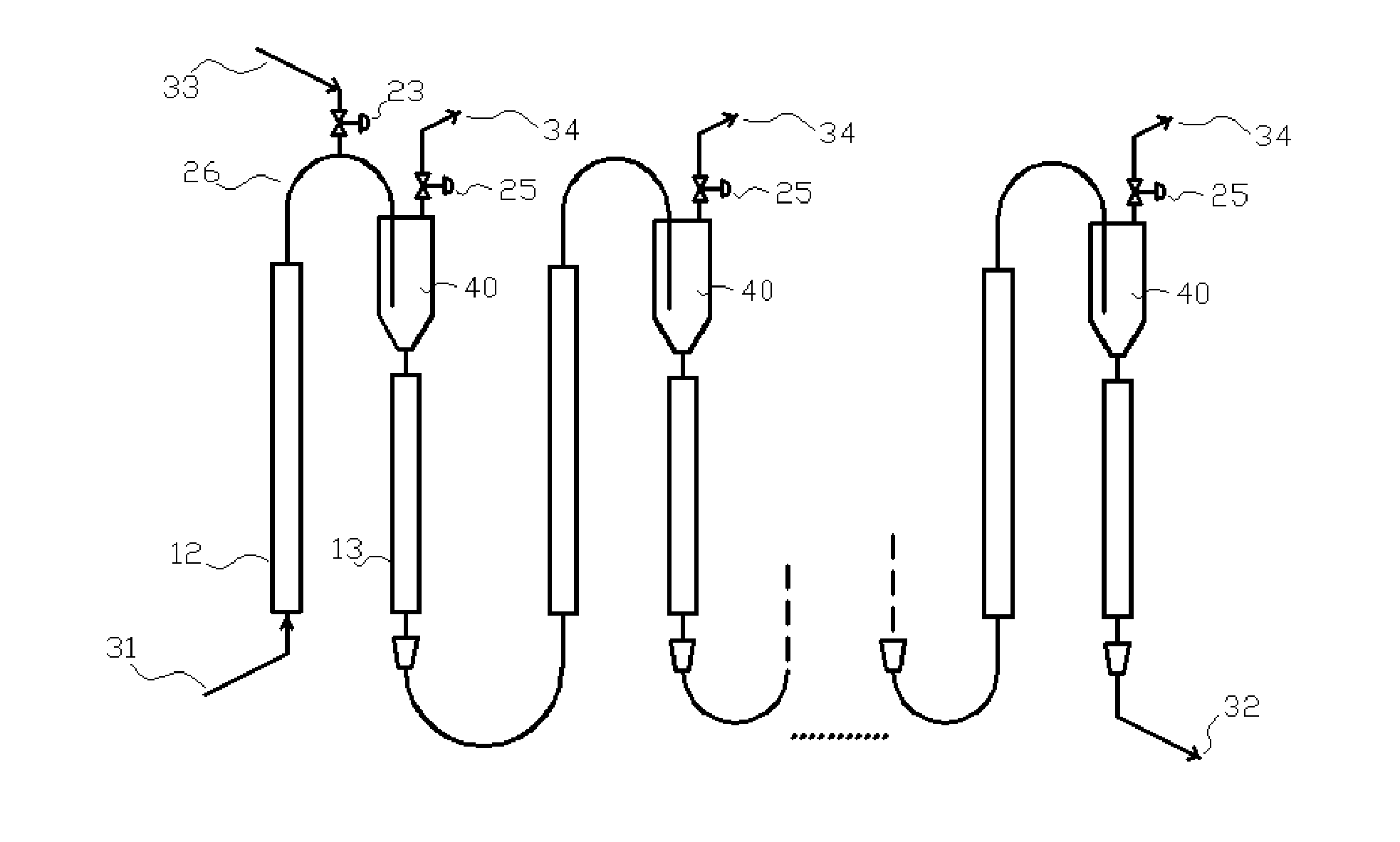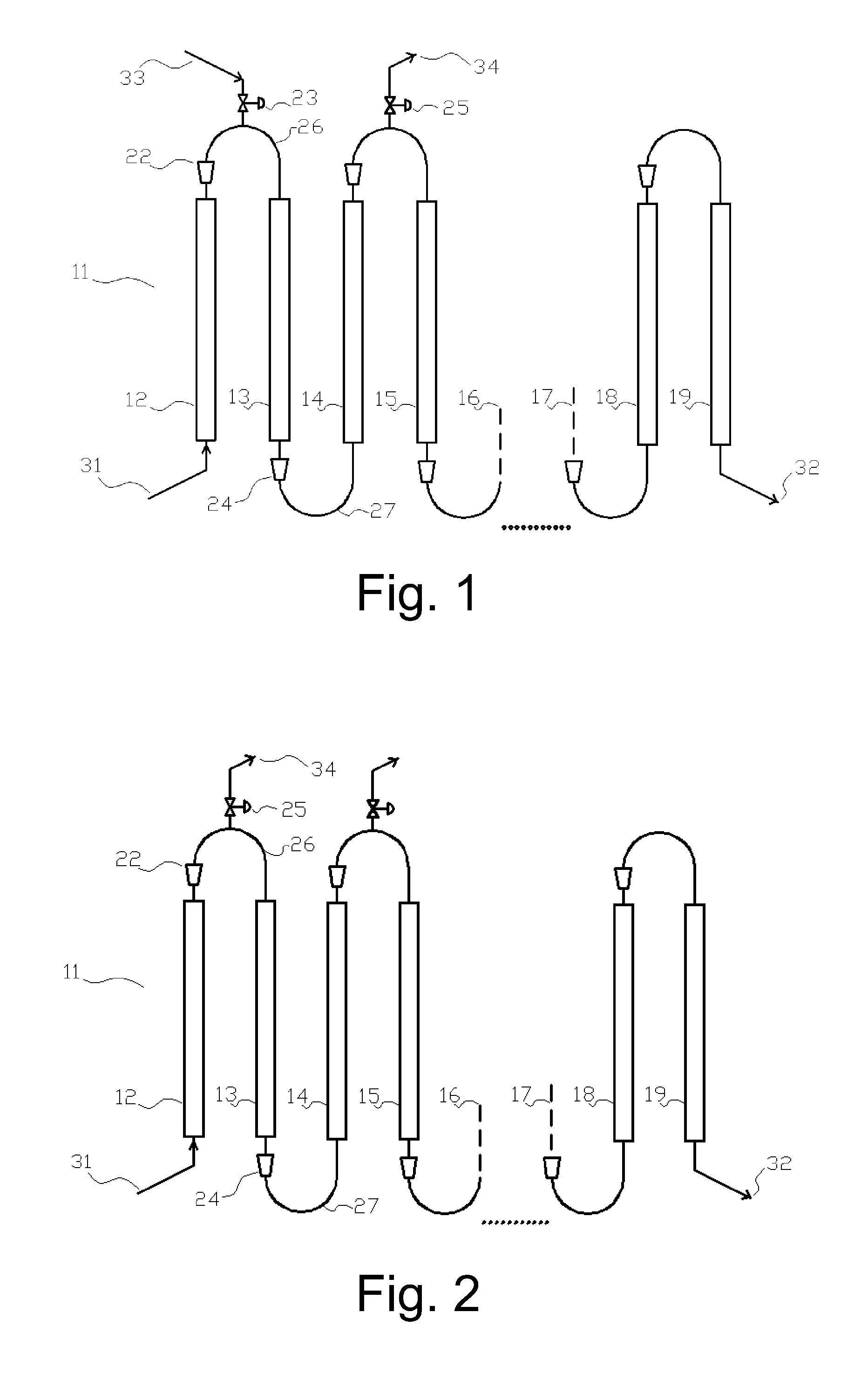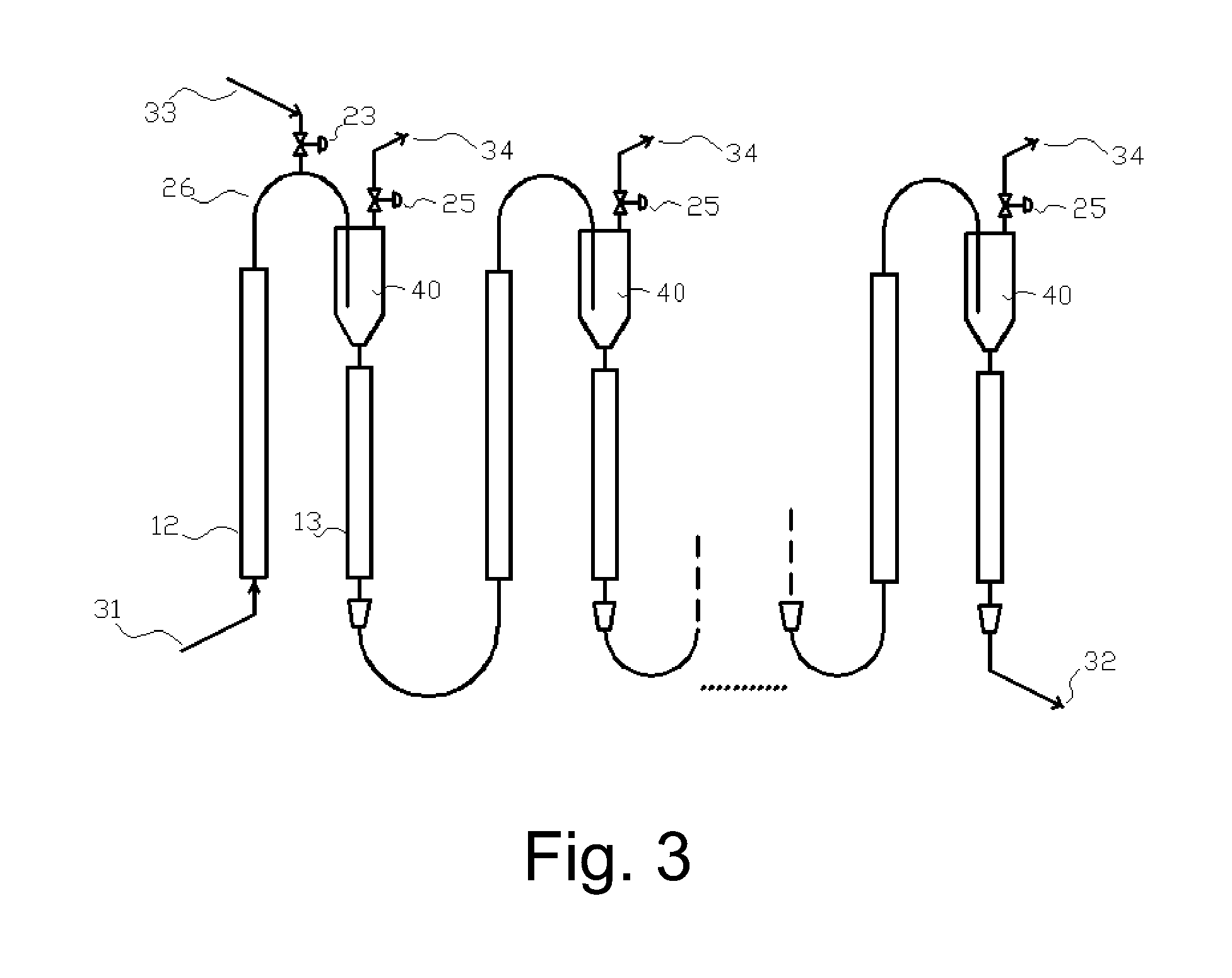Process for the depressurization of fluids and device suitable for the purpose
a technology for depressurizing fluids and fluids, applied in the direction of dispersed particle filtration, chemistry apparatus and processes, dispersed particle separation, etc., can solve the problems of poor reliability, obstructing the cross sectional area, and affecting the depressurization effect of fluids
- Summary
- Abstract
- Description
- Claims
- Application Information
AI Technical Summary
Benefits of technology
Problems solved by technology
Method used
Image
Examples
example a1
[0076]FIGS. 4 and 5 illustrate an example of a phase separator to be used with the embodiment “M3” described above.
[0077]The flow coming from the connection (26, FIG. 3) is fed to the telescope (66) by means of the flange (61) which introduces the fluid into the separator (65).
[0078]The phase separator (65) consists of a section of pipe having a diameter (D2) much greater than the diameter (D1) of the inlet pipe (66). The ratio between D2 and D1 is generally at least 1.2. The ratio between D2 and D1 preferably ranges from 1.5 to 10; even more preferably, the ratio between D2 and D1 ranges from 2 to 5.
[0079]The height of the outflow (H2) is typically lower than the height of the cylindrical section of the separator (H1), so as to maximize the separation of the gaseous phase. The fluid thus degassed passes to the descending duct (13, FIG. 3) through the flange (62).
[0080]The angles (A1) and (A2) for the connection of the degasser to the telescope (66) and descending duct (62) can have...
example a2
[0084]With reference to the embodiments described above, a stream richer in gaseous phase (34) can be withdrawn from the upper area of the ascending ducts (12; 14; 16; and descending ducts (13; 15; 17; or from the connection section (26). Alternatively, said stream can be withdrawn from the separation device (40) connected between the two ducts, as illustrated in the embodiment “M3” described above.
[0085]A filtering can be useful for preventing the non-gaseous components of said stream richer in gaseous phase from generating blockages or malfunctioning of the equipment downstream of said stream, such as for example the valves (25) which can be installed for the regulation and control of the outgoing flow.
[0086]The filtering element can be advantageously situated inside or on the wall of the separation device or elements mentioned above. Alternatively, it can be applied along the outgoing duct of the flow rich in gaseous phase. In the latter case, said filtering element is preferably...
example 1
[0095]A device is constructed for the depressurization of a fluid according to the embodiment “M2” described above.
[0096]The fluid (31) at the inlet of the depressurizer consists of a mixture of water, fed at a flow-rate of 7 tons per hour, and air, fed at a flow-rate of 1,500 normal litres per hour.
[0097]The first pair of ducts is described as follows. The ascending duct (12) consists of a steel pipe, having a nominal diameter of 3 inches (internal diameter, as per schedule, 77.83 mm), a length of 3,000 mm, vertically positioned. The section change (22) consists of a commercial reduction from 3 inches (7.62 cm) to 4 inches (10.16 cm) (nominal values). The curved section (26) consists of two commercial curves at 90° interspaced by a straight horizontal section of 200 mm, both of 4 inches (10.16 cm), on which a mouth connected to a ball valve (25), is inserted. The other end of the ball valve is open towards the atmosphere. The descending section (13) has a nominal diameter of 4 inch...
PUM
| Property | Measurement | Unit |
|---|---|---|
| temperature | aaaaa | aaaaa |
| height | aaaaa | aaaaa |
| relative pressure | aaaaa | aaaaa |
Abstract
Description
Claims
Application Information
 Login to View More
Login to View More - R&D
- Intellectual Property
- Life Sciences
- Materials
- Tech Scout
- Unparalleled Data Quality
- Higher Quality Content
- 60% Fewer Hallucinations
Browse by: Latest US Patents, China's latest patents, Technical Efficacy Thesaurus, Application Domain, Technology Topic, Popular Technical Reports.
© 2025 PatSnap. All rights reserved.Legal|Privacy policy|Modern Slavery Act Transparency Statement|Sitemap|About US| Contact US: help@patsnap.com



